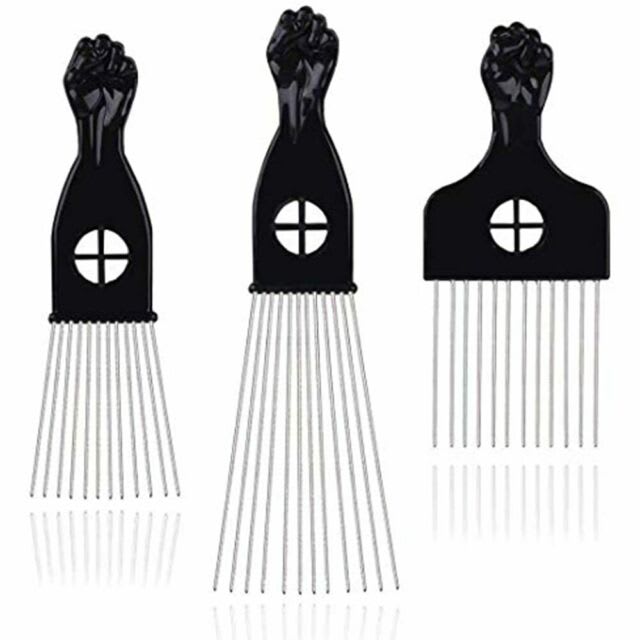The African Tales of The Historical 7000 Year Old Afro Comb
Hairstyles and grooming have been of great importance in the African culture, as well as through-out the African Diaspora. The Afro comb, also known as an Afro pickhas long been a tool that is used to create eye-catching and culturally relevant hairstyles for both men and women of African descent.
There are archaeological burial records that indicate that some variation of the afro comb has been around for thousands of years. Studies show that the comb is around 6,000 years old and originated in Africa before re-emerging in Britain, the Americas and the Caribbean.
Archaeologists have unearthed combs that resemble afro combs that could be 7,000 years old. These were found in Kush and Kemet, ancient civilizations that are today known as Sudan, South Sudan and Egypt. The long-toothed Kemet combs were decorated with birds, bulls horns and hippopotamus. This showed civilization’s respect for nature. As hair styles and hair types changed, the picks and combs evolved. Double sided combs and combs with smaller teeth emerged as prominent hair maintenance tools. As the Roman reign started in Egypt 30 BCE, combs were manufactured for other Roman provinces and controlled territories. Beginning of 400 CE, Christianity and Islam morphed the cultural significance of the comb. Carpenters began to make picks and combs, specifically made of wood and with very intricate religious designs.
By looking at parallels within the African cultures, a better understanding of how items that relate to hair were used in Kemet. Ethnographic photographs from the late nineteenth and early twentieth centuries show that the combs were used for multiple purposes. This includes combs being used as status symbols, as decoration for the hair and as tools, which supported the evidence from ancient Egyptian burials. There are also parallels in the decorative techniques that were used in both Kemet and West African cultures.
The afro-comb was initially made of wood, but was later mass produced and became more available to the general public. Around the 20th century, afro combs started to take on a different cultural and political meaning. The “black fist” was added to the bottom of many afro combs, which is a reference to the Black Power salute that was made popular by the Black Panther.
The black fist comb was introduced in 1969 by Samuel H. Bundles, Jr. and Henry M. Children (Tulloch). In addition to using it as a styling tool, many black men and women wore the picks in their afros to express their cultural pride. The afro comb was worn in the hair not only as an adornment but also as a political emblem and a signature of a collective identity. It was recognized as a way of saying ‘no’ to oppression. The 1964 Civil Rights Act, the 1965 Voting Act and the 1968 Fair housing Act set the standard to racial revolution. Additionally, in the 1960s the Black is Beautiful movement was born to fight for equal rights and a positive perception of the African American body. This decade was also a time when more black women were deciding to wear their hair in its natural state, instead of pressing it and conforming to a European standard of beauty. New hairstyles like the afro also emerged to bolster the popularity of the comb.
Today afro combs are viewed as collector’s items. Combs in similar shape are still used across Africa. In other west African countries including Nigeria, Benin, Togo and Ivory coast, traditional Yoruba combs, long-toothed and necked are given as gifts and friendship charms. These days it even makes an appearance on mainstream television in America, through the roots drummer – Questlove, who is fond of wearing one while performing. The combs are truly a work of art and have been featured at Cambridge university’s Fitzwilliam Museum. The hundreds of combs on display show that over time the style has not changed.
Leave a Comment
Sign in or become a Africa Rebirth. Unearthing Africa’s Past. Empowering Its Future member to join the conversation.
Just enter your email below to get a log in link.


Related News
The Rise and Fall of the Ancient Kongo Kingdom
Nov 20, 2023
The Real Reason Why Africa Was Called the Dark Continent
Oct 31, 2023
The Rise and Fall of the Ancient Asante Empire
Oct 29, 2023